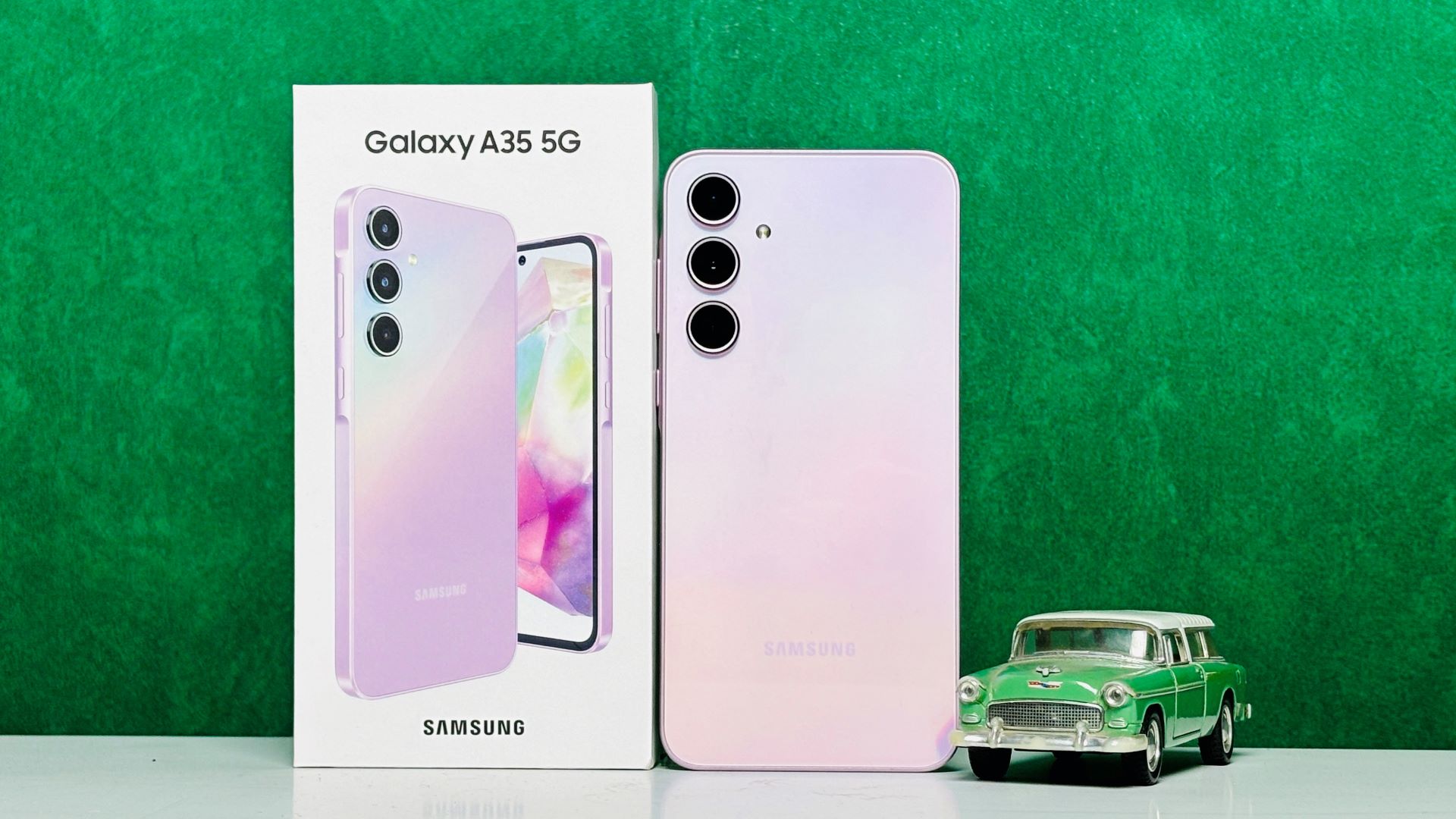Samsung’s A series has always been praised for striking a perfect balance between affordability and reliable features. With the introduction of the Galaxy A35, Samsung continues this trend by offering a compelling package that aims to enhance the mid-range smartphone experience.
The Galaxy A35 boasts a fresh, updated design that aligns with the premium S series. It also features an upgraded display, Exynos 1380 SoC, and a camera setup similar to its predecessor, the Galaxy A34. However, in a market flooded with options in the INR 30,000 price range, the Samsung Galaxy A35 faces tough competition. Let’s delve into our review to determine if it can successfully navigate this highly competitive landscape.
Samsung Galaxy A35: Design & Display
Samsung has incorporated Gorilla Glass Victus+ into the phone for added durability, which is a significant selling point. The phone’s frame is flat-edged, mirroring the design of Samsung’s flagship Galaxy S series. These flat edges not only provide a more contemporary look but also ensure a secure grip. Additionally, this design choice allows Samsung to achieve an IP67 rating for the phone.
Moving on to the display, the Galaxy A35 boasts a 6.6-inch Super AMOLED display with a 120Hz refresh rate. The phone has transitioned from dewdrop notches to punch-hole displays.
The A35’s display lives up to this reputation, providing a truly immersive viewing experience. Whether you’re watching your favorite shows, browsing social media, or editing photos, the visuals are sharp, clear, and full of life. The Galaxy A35 also includes stereo speakers that deliver loud output, making them ideal for content viewing.
Samsung Galaxy A35: Software & Performance
What sets the software experience apart is Samsung’s One UI 6.1 interface. One UI is known for its user-friendly layout, intuitive design, and a wide range of customization options. It allows users to personalize their phone’s experience, from changing themes and icon packs to adjusting notification settings and creating custom quick access menus.
A major selling point of the Galaxy A35 is Samsung’s commitment to software updates. The company has promised to provide four years of major Android updates and five years of security patches for the A35. This extended software support is a significant advantage compared to many other mid-range phones, which usually only receive two or three years of updates.
However, it’s important to note that One UI, while feature-rich, can sometimes feel bloated with pre-installed Samsung apps. Fortunately, many of these apps can be disabled or uninstalled if they’re not to your liking.
Moving on to performance, the Galaxy A35 is powered by the Exynos 1380 5G chipset. This chipset was first seen on the Galaxy A54 last year and has since made its way to the A3X series. The Exynos 1380 is built on a 5nm manufacturing process, which means improved efficiency and lower power consumption compared to previous generations.
However, it’s important to have realistic expectations when it comes to the A35’s performance limitations. Users who push their phones with demanding games or heavy multitasking might experience occasional stutters or frame drops. In terms of benchmarks, we achieved a multi-core score of 2916 and a single-core score of 1025 on GeekBench 6.
Compared to its competitors in the mid-range segment, the A35’s performance is on par with options powered by the Qualcomm Snapdragon 7 Gen 1 and just below the Snapdragon 7s Gen 2.
The Galaxy A35 features the same 5,000 mAh battery as its predecessors. During our testing, we achieved over 6 hours of screen-on-time (SoT) with mixed usage. Unfortunately, the charging speeds are still limited to just 25W, resulting in a charging time of approximately 2 hours from 0 to 100% when using a third-party PD charger.
Samsung Galaxy A35: Camera Performance
The ultrawide sensor allows you to capture expansive landscapes and group photos. Samsung’s extensive experience in this field ensures good consistency between wide and ultrawide camera images, which is a major advantage. The inclusion of a 5MP macro sensor enables close-up shots of small objects. However, due to its low resolution, these photos often lack sharpness and detail.
Unfortunately, low-light performance is a weak point for the Galaxy A35’s camera system. Photos taken in low-light conditions tend to be noisy and lack detail. While there is a Night mode available, it only partially improves the situation by brightening the image, but it can introduce artifacts and reduce sharpness.
The 13MP front-facing camera is suitable for capturing selfies for social media sharing. However, like the rear camera, it struggles in low-light situations, resulting in grainy and blurry photos.
Samsung A35 Review – The Verdict
However, it is worth noting that the camera system is average, and power users may find the performance lacking for demanding tasks. If these factors are not dealbreakers for you, the A35 offers excellent value for its price and deserves consideration in the mid-range market.

